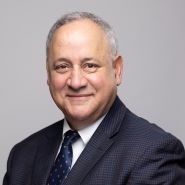Federal Circuit Clarifies which Third Party Uses are Germane to Challenge a Registrant's Section 2(f) Claim of "Substantially Exclusive" Use
- December 13, 2021
- Article
Associated People
Associated Practices
In Galperti, Inc. v. Galperti S.r.L., 2021 USPQ2d 1115, 2021 U.S. App. LEXIS 33616 (Fed. Cir. Nov. 12, 2021), the Federal Circuit addressed a challenge to Galperti S.r.L.’s (“Galperti-Italy”) registration of the mark GALPERTI based on a claim of substantially continuous and exclusive use for five years under Section 2(f) of the Trademark Act. The Section 2(f) standard for acquired distinctiveness states:
The mark has become distinctive of the goods listed in the application through the Applicant’s substantially exclusive
and continuous use in commerce for at least the five years immediately before the date of the statement.
15 U.S.C. § 1052(f).
Galperti, Inc. (“Galperti-USA”) had petitioned to cancel the registration on several grounds including that the registration was obtained by fraud because GAlperti-Italy’s statement of “substantially exclusive” use was intentionally false.
After an initial remand, the Trademark Trial and Appeal Board again dismissed Galperti-USA’s fraud cancellation petition ruling that (a) Galperti-USA’s use of GALPERTI had not acquired secondary meaning and therefore could not be the basis for showing that Galperti-Italy’s use of the mark was not “substantially exclusive;” and (b) because Galperti-USA failed to demonstrate privity with other third party users of the GALPERTI mark during the relevant period, Galperti-USA could not rely on those other third party uses to show falsity of Galperti-Italy’s claim of “substantially exclusive” use.
In the second appeal, the Federal Circuit held that Galperti-USA was not required to establish secondary meaning of its own uses of GALPERTI in order for those uses to be counted in determining the falsity of Galperti-Italy’s claim of substantially exclusive use; and “[u]se by anyone, regardless of relation to the challenger, may undercut a claim of substantially exclusive use.” Slip op. at *10. A relationship of privity was not required for those third party uses to be relevant. Id. Rather, “when evaluating whether an applicant has had ‘substantially exclusive’ use of a mark, we look to whether any use by a third party was ‘significant,’ or whether it was merely ‘inconsequential or infringing.’” Galperti, Inc. v. Galperti S.r.L., 791 Fed. Appx. 905, 910 (Fed. Cir. 2019) (quoting L.D. Kichler Co. v. Davoil, Inc., 192 F.3d 1349, 1352 (Fed. Cir. 1999)).
The Federal Circuit vacated the Board’s decision and remanded for further proceedings.Recent Publications
5 IP Rules to Know to Protect Your Business in the United States (article in French)
Coaching INPI Newsletter










 Counseling & Strategic Advice
Counseling & Strategic Advice IP Transactions
IP Transactions Litigation
Litigation PTAB Proceedings
PTAB Proceedings Start-Up
Start-Up Technology Transfer
Technology Transfer Trademark & Designs
Trademark & Designs U.S. Patent Procurement (Application Drafting & Prosecution)
U.S. Patent Procurement (Application Drafting & Prosecution)








